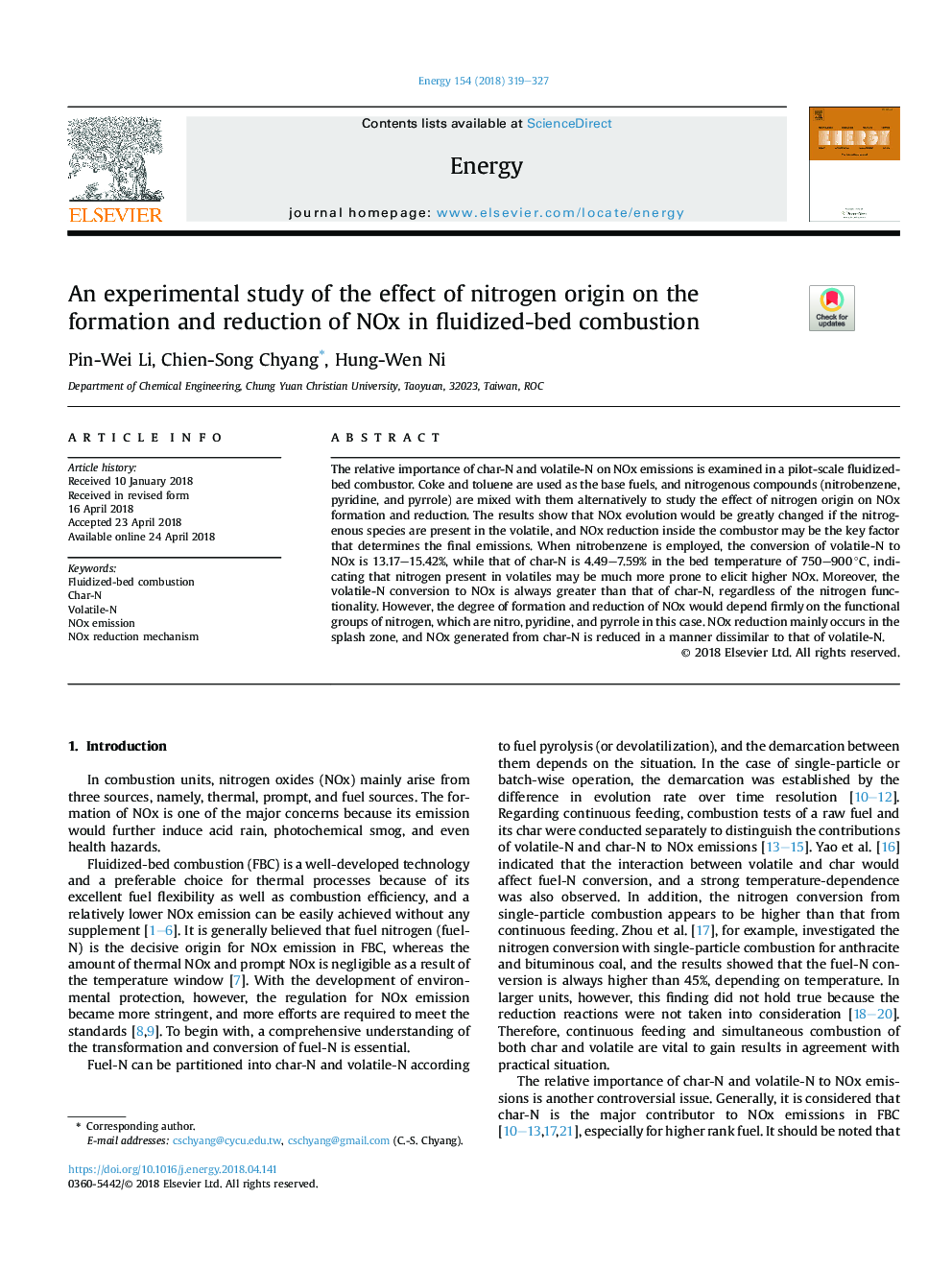| Article ID | Journal | Published Year | Pages | File Type |
|---|---|---|---|---|
| 8071457 | Energy | 2018 | 9 Pages |
Abstract
The relative importance of char-N and volatile-N on NOx emissions is examined in a pilot-scale fluidized-bed combustor. Coke and toluene are used as the base fuels, and nitrogenous compounds (nitrobenzene, pyridine, and pyrrole) are mixed with them alternatively to study the effect of nitrogen origin on NOx formation and reduction. The results show that NOx evolution would be greatly changed if the nitrogenous species are present in the volatile, and NOx reduction inside the combustor may be the key factor that determines the final emissions. When nitrobenzene is employed, the conversion of volatile-N to NOx is 13.17-15.42%, while that of char-N is 4.49-7.59% in the bed temperature of 750-900â¯Â°C, indicating that nitrogen present in volatiles may be much more prone to elicit higher NOx. Moreover, the volatile-N conversion to NOx is always greater than that of char-N, regardless of the nitrogen functionality. However, the degree of formation and reduction of NOx would depend firmly on the functional groups of nitrogen, which are nitro, pyridine, and pyrrole in this case. NOx reduction mainly occurs in the splash zone, and NOx generated from char-N is reduced in a manner dissimilar to that of volatile-N.
Related Topics
Physical Sciences and Engineering
Energy
Energy (General)
Authors
Pin-Wei Li, Chien-Song Chyang, Hung-Wen Ni,
